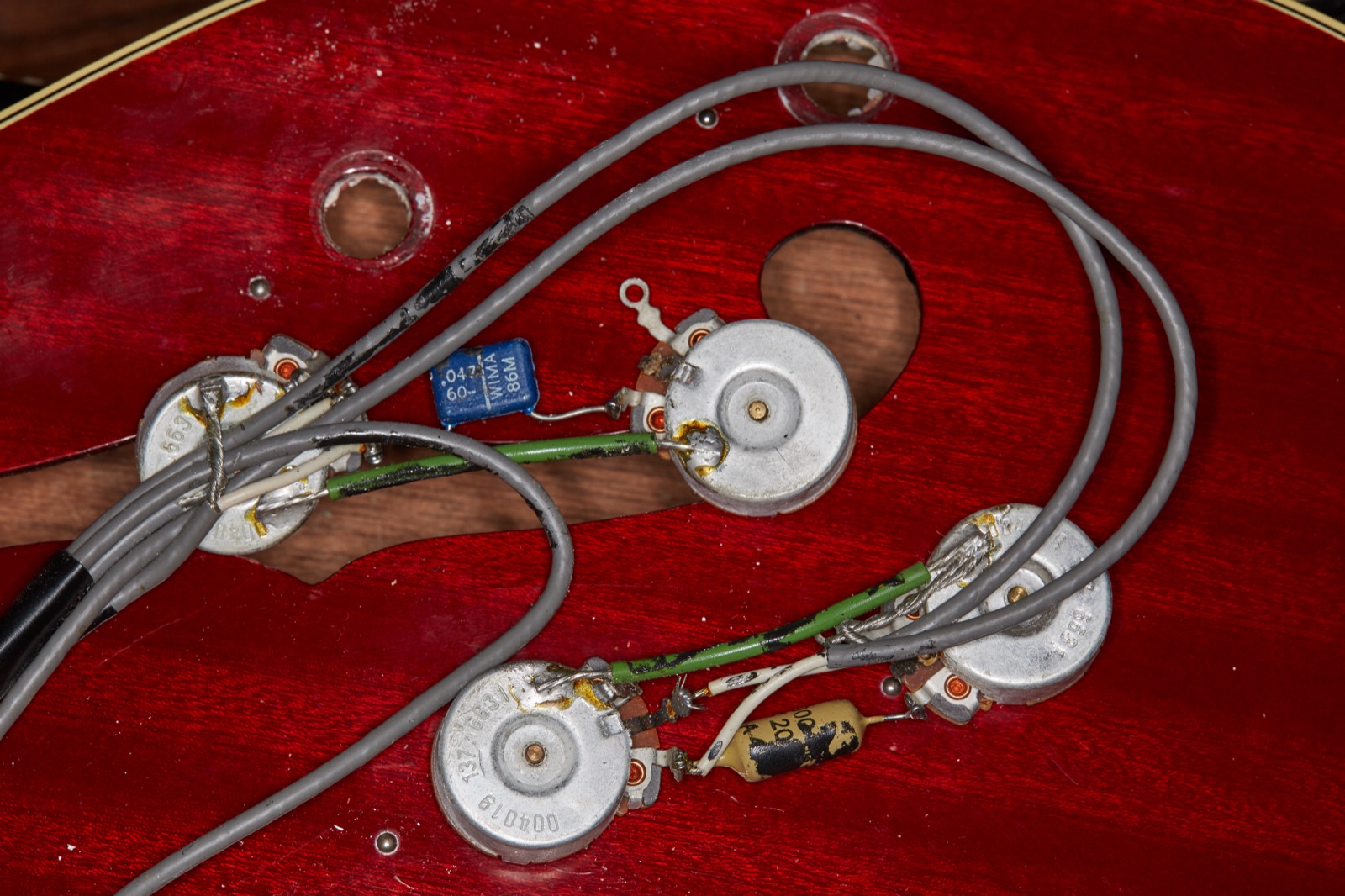stellerscrub
Junior Member
- Joined
- Jun 22, 2018
- Messages
- 19
- Reaction score
- 1
(Moderator, please feel free to post this in another forum if more appropriate.)
Tearing down my '65 CE-100D (converted in the 70s with Gibson pickups) in preparation for a complete rewiring, I found one Orange Drop capacitor, but the other was one I've never seen before:

Body is about 16 mm long. Markings are 0.01μf / +10% 200V / D6W Holland
I didn't keep track of which pot it was attached to. The wiring was a spaghetti of green, red, and black wires with a whole lot of extra length, presumably not original, but then I don't know what the original wiring would have looked like.
Is this capacitor possibly original, or put in at the time of the pickup transplant for an especially bright tone? (That's my limited understanding of what an 0.010 cap would give)
It's mostly academic at this point because I'm putting in a Toneman kit with PIO caps, but is this cap worth saving for some future project?
Tearing down my '65 CE-100D (converted in the 70s with Gibson pickups) in preparation for a complete rewiring, I found one Orange Drop capacitor, but the other was one I've never seen before:
Body is about 16 mm long. Markings are 0.01μf / +10% 200V / D6W Holland
I didn't keep track of which pot it was attached to. The wiring was a spaghetti of green, red, and black wires with a whole lot of extra length, presumably not original, but then I don't know what the original wiring would have looked like.
Is this capacitor possibly original, or put in at the time of the pickup transplant for an especially bright tone? (That's my limited understanding of what an 0.010 cap would give)
It's mostly academic at this point because I'm putting in a Toneman kit with PIO caps, but is this cap worth saving for some future project?
